Basque Fatherland and Liberty (ETA)
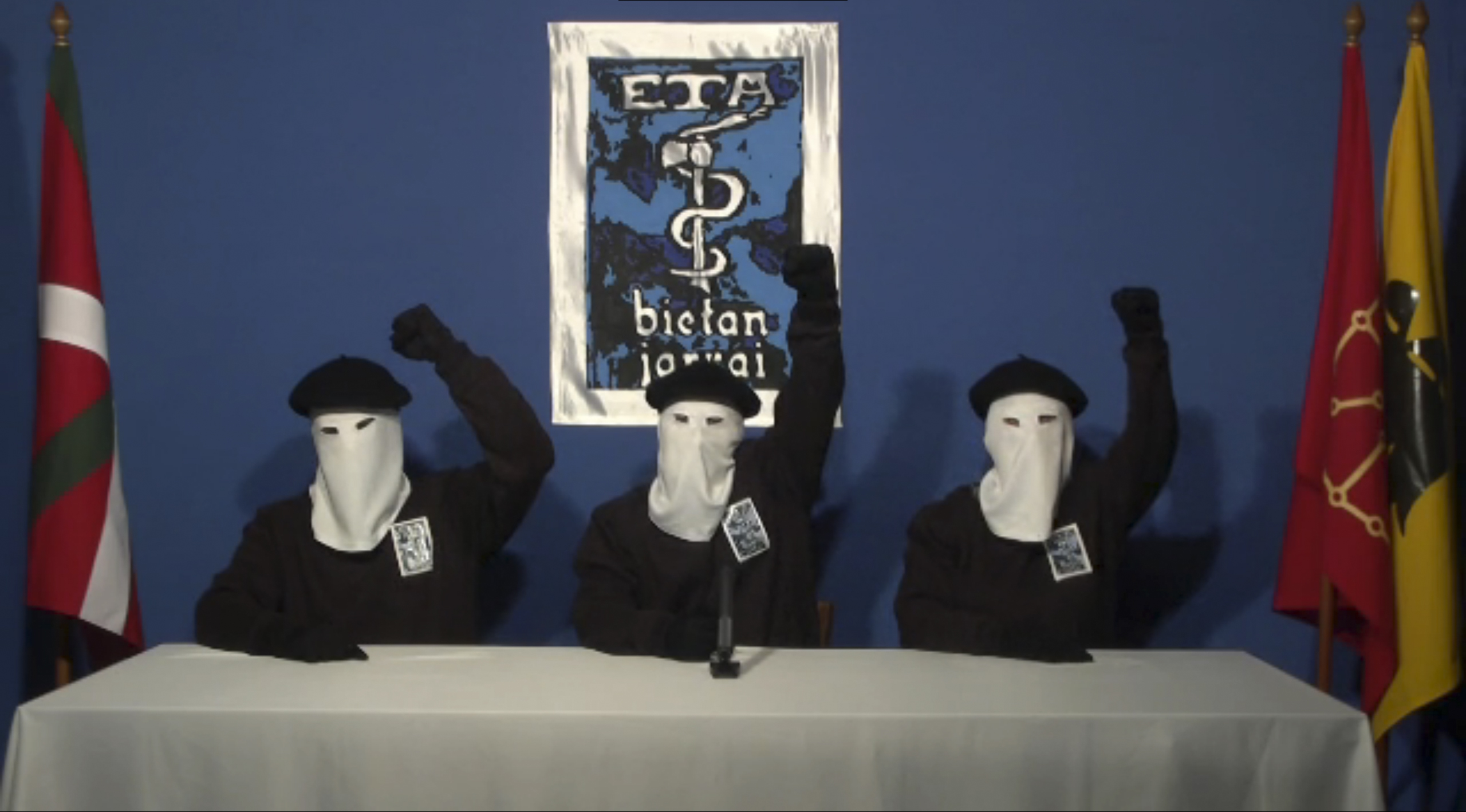
Three members of Basque separatist group ETA call a definitive end to fifty years of armed struggle, which has resulted in at least 850 deaths, in this still image taken from an undated video published on the website of Basque language newspaper “Gara,” on October 20, 2011.
Source: Gara via Reuters
Who: Active between 1959 and 2018, Basque Fatherland and Liberty (ETA) worked to achieve independence for two to three million Basque people, a culturally and linguistically distinct group whose homeland is in a mountainous region traversing Spain and France. Shortly after its founding, ETA adopted Marxist ideas, so it also qualifies as a left-wing group.
What: ETA’s members (numbering from fifty to five hundred at various times), supported by hundreds or thousands of ordinary, noncombatant Basques, sought to achieve a sovereign Basque state across northern Spain and southwestern France. ETA also sought amnesty for all its members, including prisoners, from the Spanish and French governments.
How: Most of ETA’s attacks occurred in Spain; it primarily used bombings and assassinations to target Spanish government officials. Victims sometimes included civilians, although ETA often phoned in warnings of its attacks before carrying them out. In 2011, ETA officially ceased armed combat and in 2018 dissolved after apologizing to victims and their families.
Liberation Tigers of Tamil Eelam (LTTE)
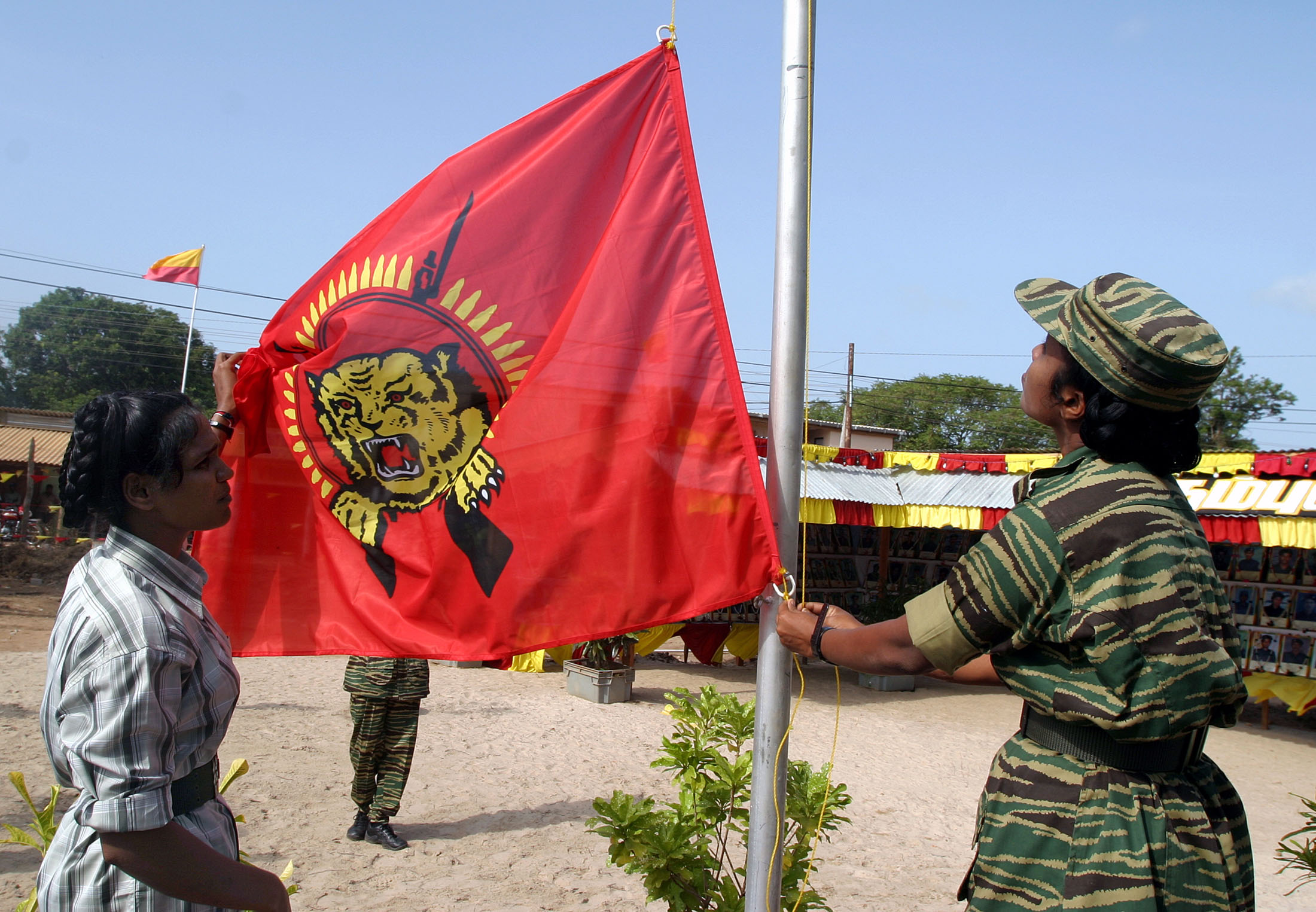
LTTE rebels raise their flag at a Black Tigers Day ceremony in the rebel-held northern Sri Lankan town of Kilinochchi, on July 5, 2004.
Source: Anuruddha Lokuhapuarchchi/Reuters
Who: More commonly known as the Tamil Tigers, this group from Sri Lanka was founded in 1976 on behalf of the Tamils, an ethnic group found mostly in northern and eastern Sri Lanka, as well as southern India. The group, active in Sri Lanka and India until 2009, is believed to have had between seven thousand and fifteen thousand fighters.
What: Citing anti-Tamil discrimination and violence by Sri Lanka’s majority, the Sinhalese, the LTTE aimed to create a separate, independent state for the Tamils, who make up 11 percent of the population.
How: The LTTE waged guerrilla warfare; it was also known for pioneering the suicide bomb jacket, as well as the use of women in its attacks, notably in 1991, when an LTTE suicide bomber killed former Indian Prime Minister Rajiv Gandhi in India, and in 1993, when it assassinated the Sri Lankan president Ranasinghe Premadasa. By 2009, however, the LTTE no longer had the military might it once commanded, and the Sri Lankan army overcame it, killing its top leadership in the process.
Revolutionary Armed Forces of Colombia (FARC)
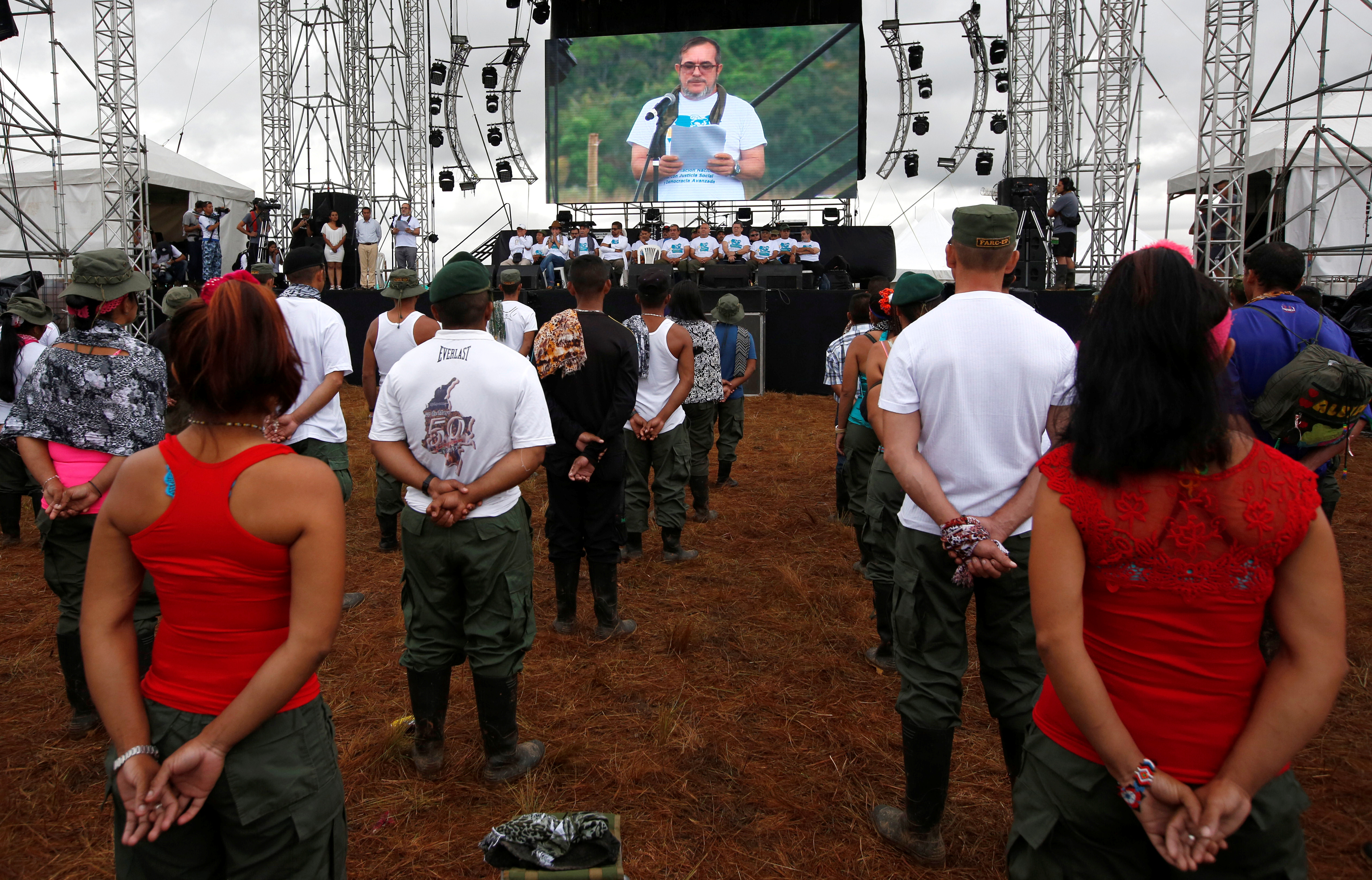
FARC rebel leader Rodrigo Londono, better known as Timochenko, is seen on a screen during the opening ceremony of the group’s congress at the camp where they prepare for ratifying a peace deal with the government, in Yari Plains, Colombia, on September 17, 2016.
Source: John Vizcaino/Reuters
Who: FARC was active in Colombia between 1964 and 2016. Composed of communist militants and peasant self-defense groups, FARC’s membership numbered at eighteen thousand at its 1999 peak and six or seven thousand by 2016, when peace talks were ongoing. FARC was formed after a decade of bloody civil conflict and political violence in Colombia whose resolution was inclusive of the two major political parties but not of any left-wing organization.
What: During its fifty-year struggle against the Colombian government, FARC sought to overthrow that government and establish a leftist regime in its place. It claimed to fight for Colombia’s impoverished rural population; for example, it wanted to keep natural resources publicly, rather than privately, owned.
How: FARC waged a guerrilla war against Colombian security forces, and fought right-wing paramilitaries aligned with the government. FARC also carried out acts of terrorism. It conducted bombings, assassinations, and hijacked a plane; it used taxation, kidnappings, and drug trafficking to fund its activities. Its victims included many civilians; the conflict resulted in about seven million people being internally displaced. In 2016, FARC reached a peace agreement with the Colombian government.
Ku Klux Klan (KKK)

A Klansman with a tattoo on his fingers that reads “Love” participates with members of the Nordic Order Knights and the Rebel Brigade Knights, groups that both claim affiliation with the Ku Klux Klan, in a cross-lighting ceremony on a fellow member’s property in Henry County, Virginia, on August 9, 2014.
Source: Johnny Milano/Reuters
Who: The KKK is a group of American white supremacist organizations active since 1866. Founded during Reconstruction—the post–Civil War period during which the federal government tried to rebuild the South and enact major reforms, such as the expansion of civil rights to formerly enslaved people—the Klan is an umbrella term used to describe dozens of groups that use the Klan name, including the Knights of the Ku Klux Klan and the Imperial Klans of America.
What: Since the nineteenth century, the Klan’s motive has been to spread and act upon its members’ beliefs in white supremacy. Its prominence has fluctuated over the years; although the group had millions of members a century ago, today, their membership has dwindled. Over its long history, the KKK has defended the legacy of the Confederacy—slave-holding states that seceded from and later fought a civil war with the United States—and targeted various minority groups in the United States, mostly Black people but also immigrants, Jews, and LGBTQ+ people, and at one point, Catholics. Today, KKK members could overlap or ally with neo-Nazis, white nationalists, and the so-called alt-right.
How: Members of the Klan have resorted to a variety of tactics to pursue their agenda, including arson, lynching, rape, and kidnapping; it also bombed a Baptist church in Birmingham in 1963, killing four Black girls.
Al-Qaeda
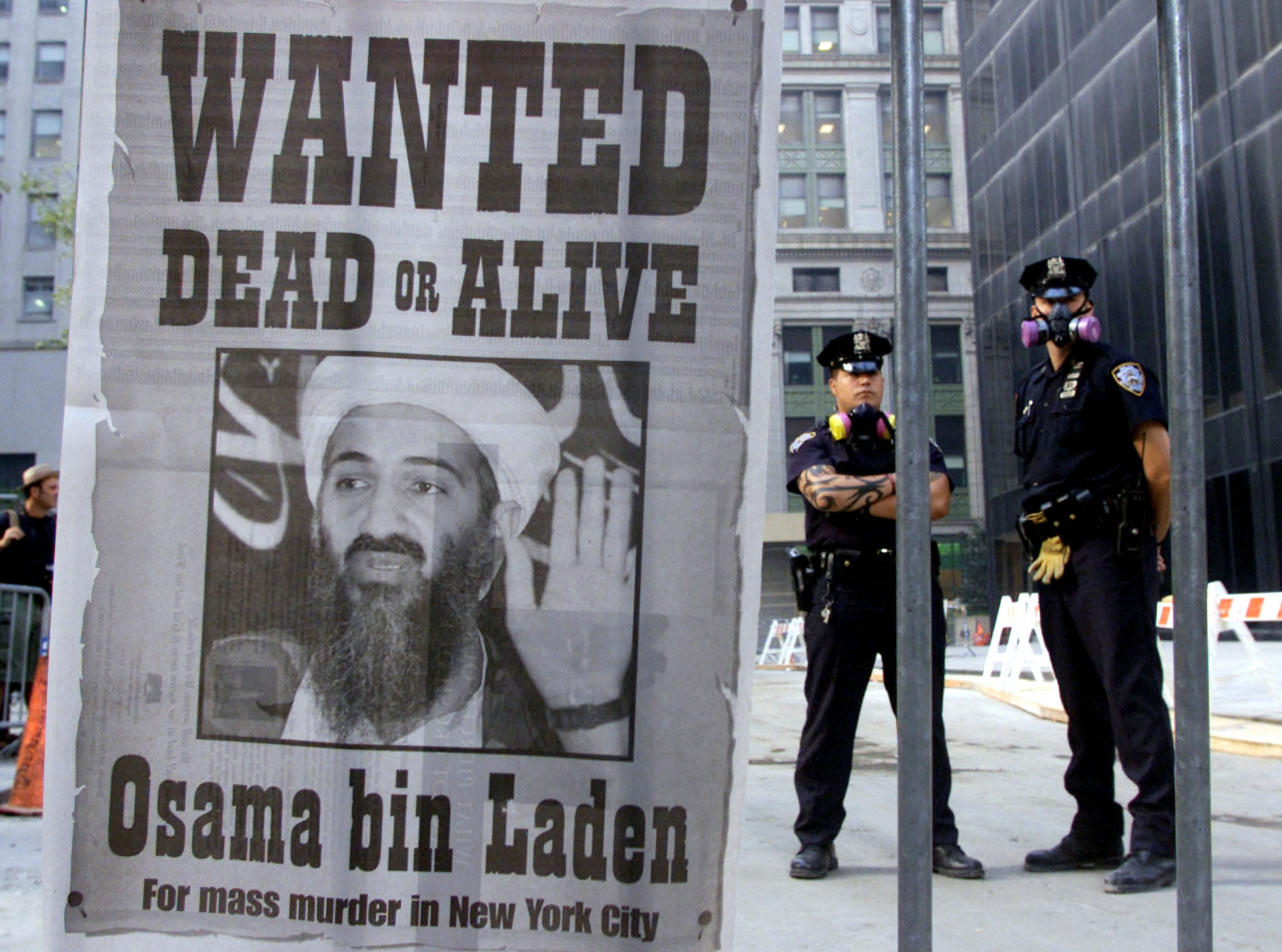
Police officers in New York stand near a full-page wanted poster for Osama bin Laden printed on a newspaper, in this file photo from September 18, 2001.
Source: Russell Boyce/Reuters
Who: Al-Qaeda was founded in 1988 by Osama bin Laden and operates as an international terrorist network with a number of affiliates around the world that are linked to the central structure. Al-Qaeda’s large network makes it hard to pinpoint the group’s exact size, but forces loyal to al-Qaeda and its affiliates likely number in the tens of thousands.
What: Al-Qaeda has several aims: it seeks to unite Muslims to fight the United States and other Western powers deemed “non-Islamic,” expel Westerners and non-Muslims from Muslim countries, and replace the governments in Muslim countries with fundamentalist Islamic regimes.
How: Al-Qaeda’s attacks are usually carefully planned over the course of months, sometimes even years. They are known for their employment of suicide bombings, including multiple suicide bombings whereby coordinated attacks take place at roughly the same time. The group is best known for the attacks of September 11, 2001, one of the deadliest terrorism incidents on record, when it hijacked four U.S. airplanes and crashed two into the World Trade Center, one into the Pentagon, and one in Pennsylvania, killing 2,996 and injuring over 6,000.
Boko Haram
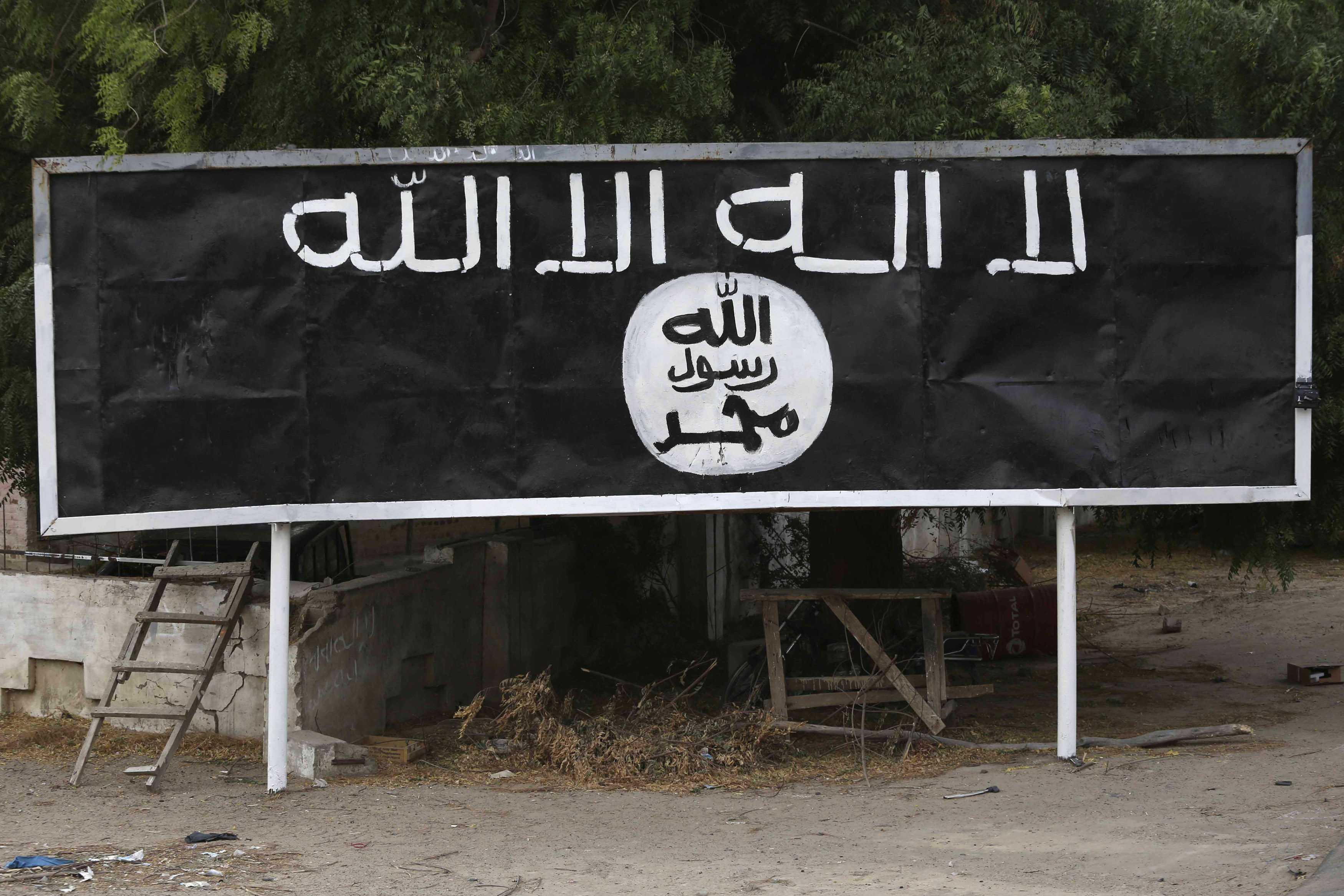
A signpost painted by Boko Haram is seen in the recently retaken town of Damasak, Nigeria, on March 18, 2015.
Source: Emmanuel Braun/Reuters
Who: Founded in 2002 by Islamist cleric Mohammed Yusuf, the group declared loyalty to the self-declared Islamic State in 2015. Boko Haram is based in Nigeria, but the group’s violence has spread to neighboring countries including Cameroon, Chad, and Niger. It’s fairly decentralized and currently split into two factions; the group’s membership ranges between four thousand and eighteen thousand militants, including many poor and uneducated young men.
What: Boko Haram’s primary objective is to overthrow the Nigerian government and institute an Islamic state governed by sharia, Islamic law derived from religious texts. As part of this campaign, Boko Haram rejects science and Western-style education.
How: Boko Haram’s insurgent tactics have shifted from targeting army and security forces to targeting civilians via attacks on schools, religious institutions, markets, and towns. In April 2014, for example, the group kidnapped 276 female students from a government-run school in Nigeria, garnering a large international response. Since 2011, it has increasingly relied on suicide bombings.
Islamic State

Math and English textbooks, which include military imagery, found in an Islamic State facility for child fighters are pictured in Mosul, Iraq, on February 16, 2017.
Source: Khalid al Mousily/Reuters
Who: The self-proclaimed Islamic State arose from the aftermath of the U.S.-led invasion of Iraq that began in 2003. Considered an al-Qaeda affiliate by 2004, it broke with the organization and became its rival. It is active in Iraq and Syria, and estimates of its fighters vary, but at its peak, it likely counted between twenty thousand and thirty-one thousand fighters in its ranks. The Islamic State used propaganda to attract tens of thousands of people from dozens of countries, many of whom traveled to Syria to fight.
What: The Islamic State’s one clear objective: to establish a single, transnational Islamic caliphate, or country governed by sharia. It capitalized on civil unrest in Iraq and Syria to advance its goals and inspired terrorist acts in its name around the world.
How: The Islamic State conquered territory using paramilitary forces and at one point controlled land in Iraq and Syria almost the size of New Zealand. It intimidated populations under its control using gruesome tactics such as mass execution, beheading, and rape. In addition, the Islamic State or individuals allied with it (with the group’s prior knowledge or not) carried out isolated terrorist attacks. The Islamic State funded its activities from the oil it controlled in Syria, as well as extortion schemes, taxes, and foreign donations from sympathetic individuals and groups. Today, territories under Islamic State control have been retaken, but the group hasn’t dissolved and continues to advocate for its goals and motivate supporters to plan attacks.